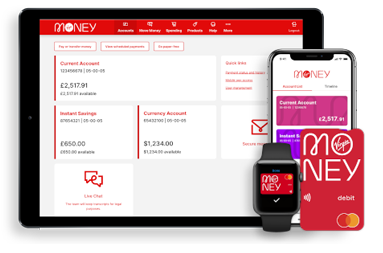Seven things to do if your business faces disaster
< back to all business news articles
15/08/2018
Disasters range in intensity and most common ones businesses face include:

- Natural: Storms, floods, droughts, earthquakes, tsunamis or fires that could disrupt your business, customers and supplies.
- Human: A loss of contracts, a key customer goes broke, key employees leave and take your best customers with them, being the victim of fraud.
- Online: A cyber-attack that compromises your business systems.
Some of these may seem more likely than others to strike your business, but remember that unexpected disasters can and do occur. The important point is to have a plan in place that will get your business back on its feet in minimal time.
Your recovery plan
It’s essential to have a recovery plan in place. The key features of the plan should include:
- Insurance – make sure you’re covered for all disaster eventualities, and keep your premiums up to date. Get expert advice on the insurance cover you need for your business, including asset protection, business interruption, business relocation, key person insurance, and other forms of protection that will allow you to get back on your feet as soon as possible.
- A communications plan – leadership after a disaster means clear and calm communications to staff, customers and suppliers. Be aware of the latest online tools as physical meetings may not be possible. Tell customers where you are if the business has been forced to relocate.
- Managing staff – a recovery plan that has been rehearsed in advance is the best security blanket for staff, who may be worried about their jobs and where the next meal will come from. If it’s possible for everyone to work from home in a disaster, make sure they are set up to do just that.
- Protection from cyber-attacks – if you don’t have in-house IT, it’s worth outsourcing the protection of your data and systems to professionals who will make sure your applications, hardware and software are protected from viruses and cyber-attacks.
Then, when disaster does strike, you’re prepared and can take action with the following 7 steps:
1. Get in touch with everyone
Make sure everyone is safe. Then find out who’s available to work. Remember that if it’s a widespread disaster like an earthquake, they’ll be dealing with their homes and families. But it’s still essential to determine that they’re OK, and take action if they’re not. Make sure that you show your appreciation for all the work they do in getting your business back on its feet.
2. Get in touch with your insurance provider
Document all damage and contact your insurance company as soon as possible. But also be prepared to take damage control steps as well. For instance, you may need to fix a leaking, damaged roof to make sure additional water doesn’t ruin your office. Some policies have loop holes so ask your agent today if you are expected to carry out these actions. You should do this now and not wait until disaster strikes.
3. Business continuity – critical activities
Your recovery plan should include an alternative location you can work from if your premises are damaged. Relocate there as soon as possible and work with your staff to get your essential systems up and running again. If you don’t have a temporary location, activate your work-from-home plan.
4. Ensure the safety of your data
If your business systems and data aren’t in the cloud or maintained by an outsourced data specialist, you’ll need to secure the safety of your hardware as soon as possible and relocate it. Get it set up and running as soon as you can to verify its integrity.
5. Inventory assets and services
Your disaster recovery plan should include a list of business assets in priority order based on which equipment and services have the greatest impact. This list should include both digital and physical assets (software and hardware). If a disaster strikes, you won’t be able to recover everything immediately, so having a priority list will help ensure the most important applications are recovered first.
6. Stabilise
Every disruption – regardless of cause – needs to be contained to prevent the situation from getting worse. This involves understanding what happened, the cause of the event – and its potential impact if left unchecked. Assess the impact, determine how to stop the bleeding and figure out what your short-term goals are.
7. Activate
Once all the above steps have been completed, it’s time to reactivate your business and get it running again. The faster you can get back to “business as usual”, the less the disaster will impact on your profits.
Summary
Being prepared for a disaster that could seriously affect your business’s ability to continue functioning is an absolute must. It’s vital you weigh up the risks of each type of disaster occurring and how each one might affect your business. Your disaster recovery plan should be well-known to all your employees, so that, should disaster strike, you will all be able to put the above 7 steps into action immediately.
Next steps
- Meet with staff and advisers to start work on a Recovery Plan.
- Discuss your insurance needs with an insurance broker.
- Make sure key staff are able to work remotely if necessary.
- Include photographs of your business and an updated assets register in your Plan.
- Take photographs again after a disaster to support your insurance claims.
POSTED IN: Startup
SHARE
Related Articles
You can find impartial information and guidance on money matters on the “MoneyHelper” website.
Clydesdale Bank is covered by the Financial Services Compensation Scheme (FSCS), Find out more.


